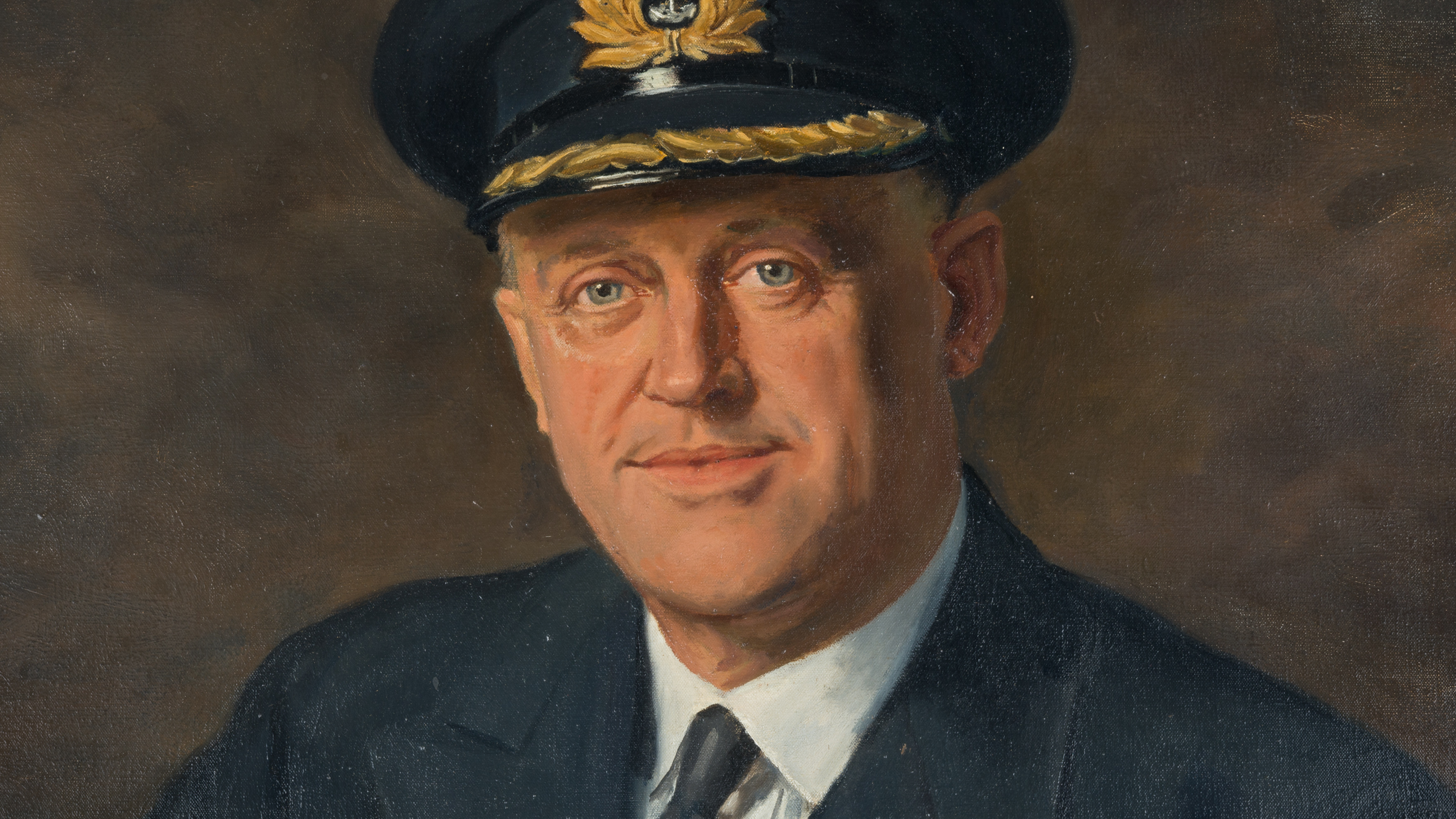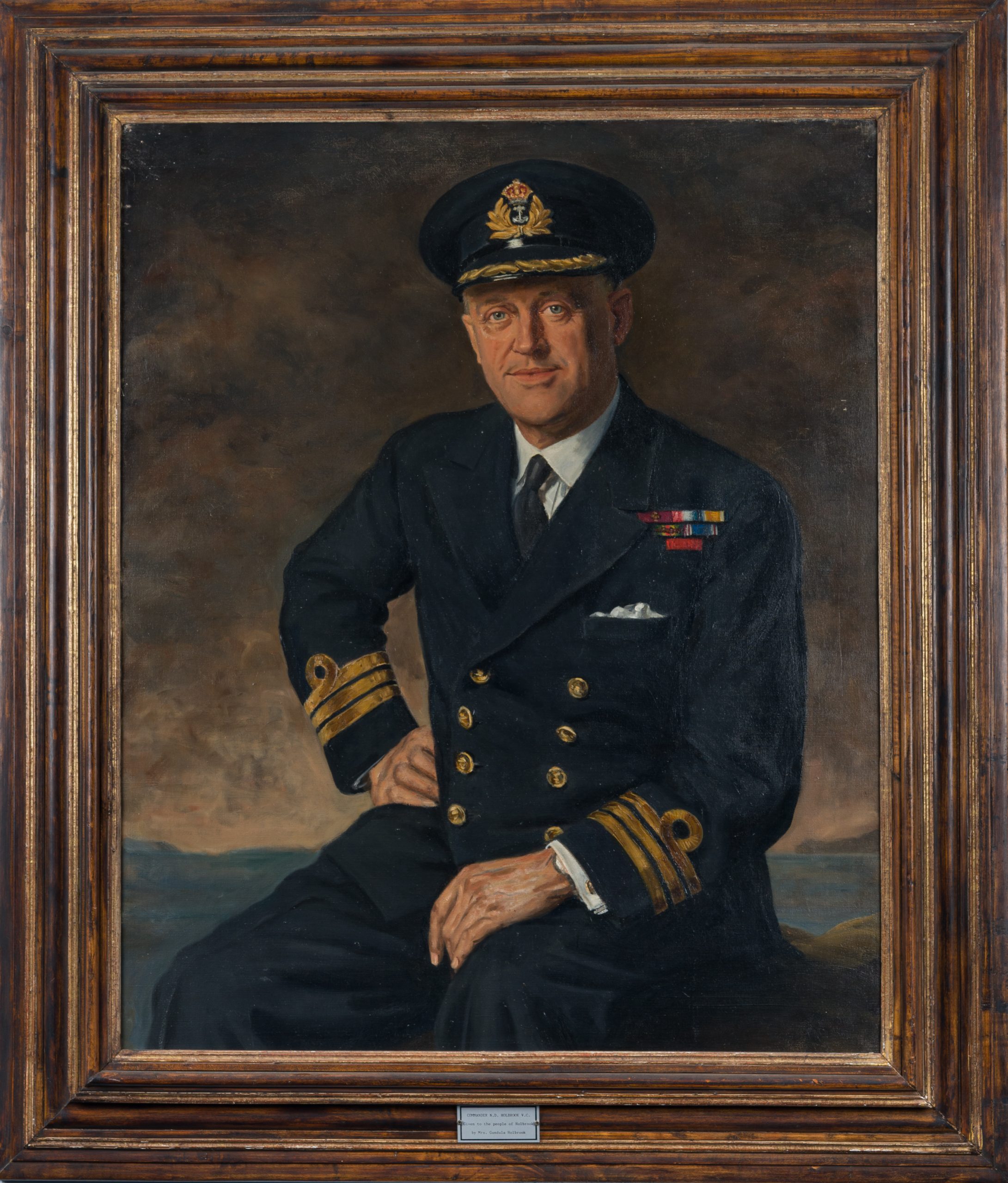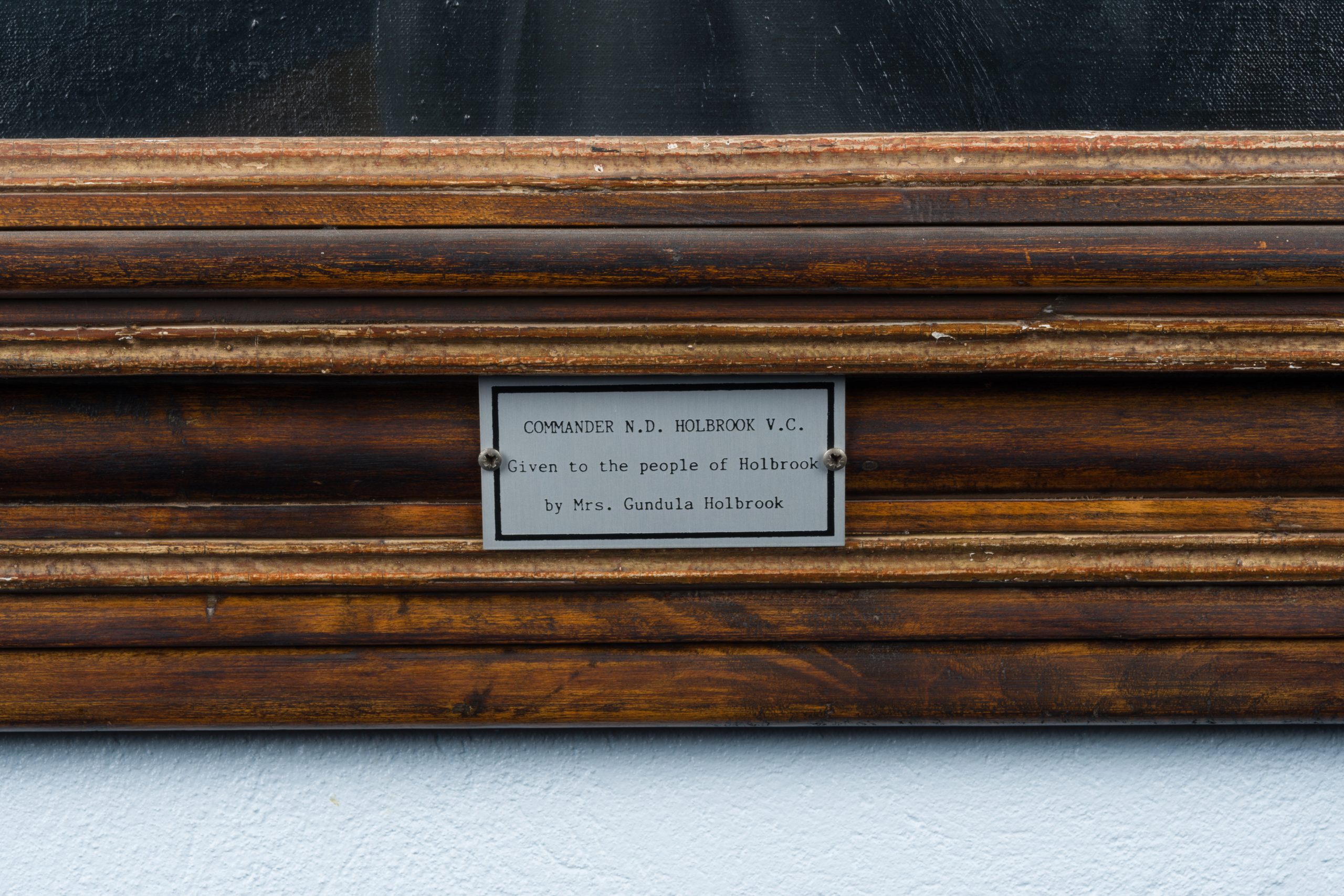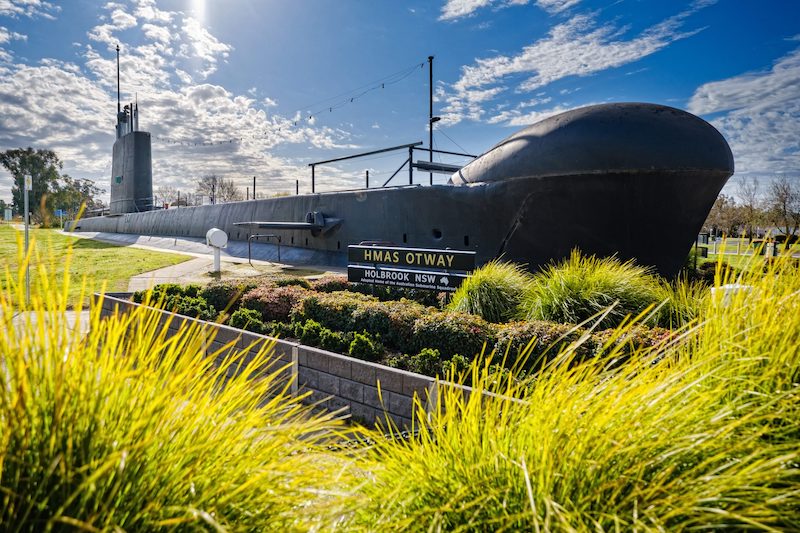A Commanding Presence
Portrait of Commander Norman Holbrook V.C.
All together, it took nine hours. Nine hours spent in the shuddering, claustrophobic hull of a WWI-era submarine. Cautiously travelling beneath an underwater minefield to then torpedo a battleship, only able to return to the safety of the open ocean via the same treacherous stretch of water. What type of person is capable of such a feat?
In viewing this portrait of the British Naval Commander, Norman Douglas Holbrook V.C. (1888–1976), we can get a little closer to the answer.
Seated with his right arm bent and resting on his hip, he inclines very slightly towards the viewer with a gentle smile imbued with friendly confidence. His blue eyes—calm, clear and intelligent—are a focal point. The ocean is calm, but the sky is darkened with the smoke of battle.
This is the man who gained worldwide fame during WWI for leading a daring mission into the Dardanelles (also known as the Strait of Gallipolli), wherein the HMS B11 successfully torpedoed a Turkish battleship which had been defending the waters. His highest honours, the Victoria Cross (represented by the maroon riband bar pinned to his chest) and the French Legion of Honour (the last red ribbon), were awarded as a result of this mission to recognise his act of extreme bravery in the presence of the enemy.
This portrait was gifted ‘to the people of Holbrook’ by the commander’s second wife, Gundula, after his death. Unfortunately, the artist was not recorded.
Today, the portrait hangs on public view at the Submarine Museum of Holbrook, the New South Wales town named for this famed British submariner.






